Table of Contents
Introduction
Top 10 Most Dangerous Apex Predators. A small number of animals rule as apex predators—masters of their respective domains—in the vast and diverse animal kingdom. With their strength, grace, and incredible survival abilities, these majestic predators capture our imaginations. Every species, from the majestic lions of the African savanna to the sly tigers of the Asian jungles, the fearsome saltwater crocodiles lurking in the rivers to the majestic polar bears roaming the Arctic ice, the fearsome great white sharks prowling the ocean depths to the elusive snow leopards of the mountain peaks, has its own hunting tactics, engages in territorial conflicts, and is essential to maintaining the delicate ecological balance of its habitat.
The Royal Felines: Lions, Tigers, and Jaguars
A. Lions: The Kings of the Savanna
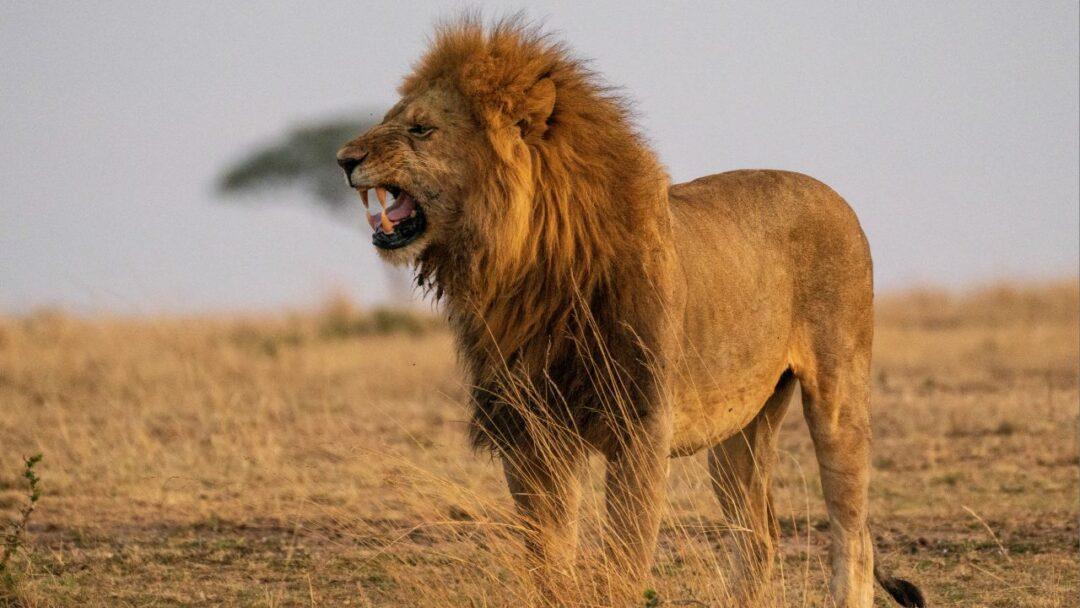
- Social Structure: Lions are the only cats that live in social groups called prides. A pride typically consists of multiple related females, their offspring, and a few adult males.
- Majestic Manes: Male lions are known for their impressive manes, which can vary in color and length. The darker and fuller the mane, the more dominant the male is considered within the pride.
- Hunting Strategies: Lions are apex predators and rely on cooperative hunting to take down large prey. They use teamwork, strategy, and their powerful jaws to bring down animals such as zebras, wildebeests, and buffalo.
- Territorial Behavior: Lions mark their territories with scent markings, roars, and visual displays. These territories can range from a few square miles to several hundred square miles, depending on the availability of prey.
- Female Dominance: In lion prides, females are the primary hunters and often work together to coordinate hunts. They exhibit exceptional teamwork and communication during the pursuit and capture of prey.
- Powerful Roars: Lions have a distinctive roar that can be heard up to 5 miles away. Roaring serves various purposes, such as communication within the pride, advertising territory, and intimidating rivals.
- Reproductive Roles: Male lions primarily protect the pride’s territory, while females take charge of hunting and raising the cubs. The females synchronize their breeding cycles, resulting in the cubs being born around the same time.
- Cub Care: Lion cubs are extremely vulnerable in their early months. They are hidden away in dense vegetation for several weeks, with the mothers taking turns nursing and caring for them.
- Threats and Conservation: Lions face numerous threats, including habitat loss, poaching, and conflicts with humans. Conservation efforts, such as protected areas, anti-poaching measures, and community-based initiatives, are crucial for their survival.
- Symbolic Status: Lions have captivated human imagination for centuries and hold symbolic significance in various cultures. They are often associated with bravery, strength, and nobility, and are frequently depicted in art, literature, and heraldry.
B. Tigers: Stealthy Shadows of the Jungle
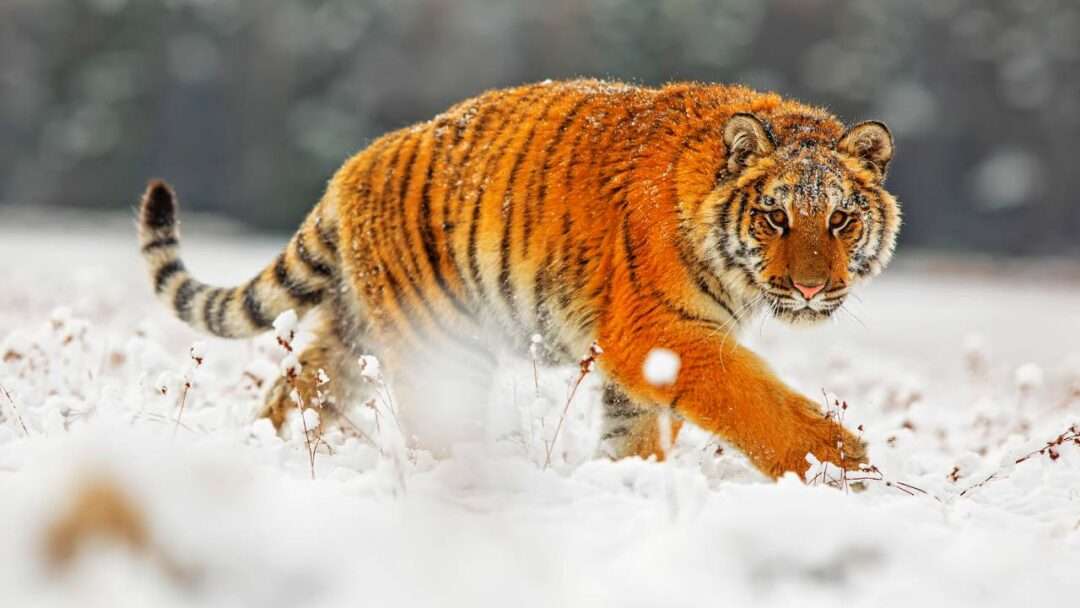
- Largest of the Big Cats: Tigers are the largest of all big cat species. Adult tigers can reach lengths of up to 11 feet (3.3 meters) and weigh up to 660 pounds (300 kilograms).
- Striking Coat Patterns: Tigers are renowned for their unique coat patterns, which act as excellent camouflage in their natural habitats. No two tigers have the same stripe pattern, making them easily identifiable.
- Powerful Predators: Tigers are formidable hunters, capable of taking down prey larger than themselves. They are highly adaptable and can successfully hunt a variety of animals, including deer, wild pigs, and even crocodiles.
- Strong Swimmers: Unlike many other big cat species, tigers are excellent swimmers. They are known to swim across rivers and lakes, sometimes for several miles, in search of food or to access new territories.
- Solitary Creatures: Tigers are solitary animals and prefer to roam and hunt alone. They establish and fiercely defend their territories, which can range from a few square miles to several hundred square miles, depending on prey availability.
- Nighttime Predators: Tigers are primarily nocturnal hunters, relying on their acute vision and hearing to track and capture prey in the cover of darkness. Their distinctive orange eyes are six times more sensitive to light than human eyes.
- Endangered Status: All tiger species are currently listed as endangered. Their populations have been greatly reduced due to habitat loss, poaching for the illegal wildlife trade, and human-wildlife conflicts.
- Unique Subspecies: There are six recognized subspecies of tigers: Bengal, Siberian (also known as Amur), Indochinese, Malayan, Sumatran, and South China. Each subspecies has its own distinct characteristics and is adapted to specific habitats across Asia.
- Powerful Jaws and Teeth: Tigers have exceptionally strong jaws and sharp teeth, allowing them to deliver a lethal bite to their prey. Their canine teeth can grow up to 3 inches (7.5 centimeters) in length, providing a formidable weapon.
- Conservation Efforts: Numerous conservation organizations and governments are actively working to protect and conserve tiger populations. Efforts include the establishment of protected areas, anti-poaching initiatives, and community-based conservation programs to mitigate human-wildlife conflicts.
C. Jaguars: Masters of the Rainforest
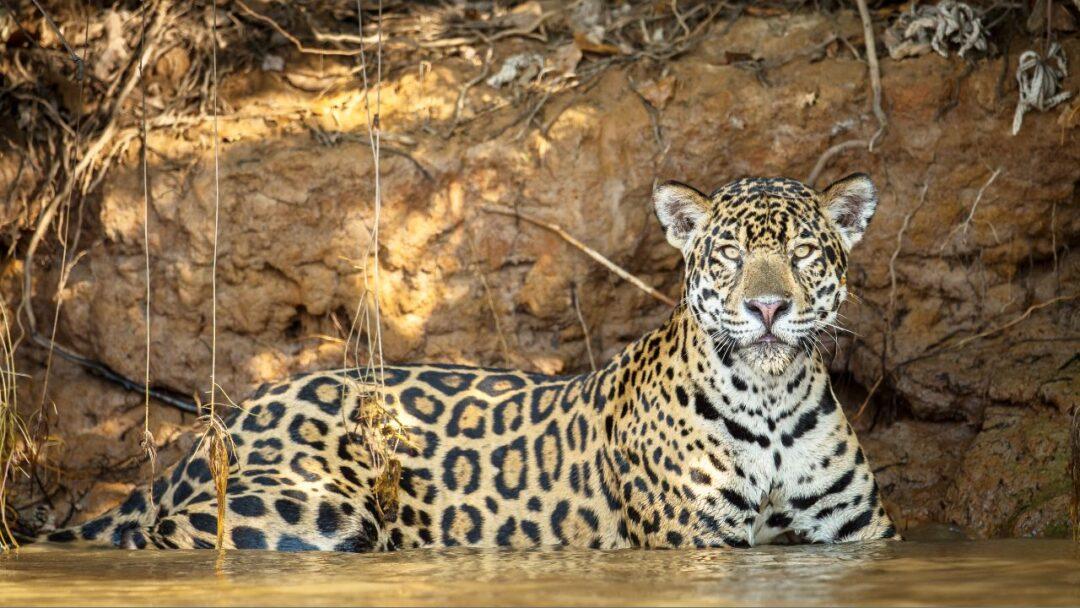
- Agile and Powerful: Jaguars are renowned for their incredible agility and strength. They possess powerful jaws, enabling them to deliver a lethal bite that can pierce the skulls of their prey, including animals much larger than themselves.
- Adaptability: Jaguars have adapted to a wide range of habitats, including dense rainforests, swamps, and grasslands. They are one of the few big cat species capable of swimming and are known to be comfortable in water.
- Unique Spotted Coat: The jaguar’s coat is distinctive, adorned with beautiful rosette patterns. These dark spots surrounded by a lighter coat provide excellent camouflage in the dappled light of their forested environments.
- Ambush Predators: Jaguars are expert stalkers and ambush predators. They often wait patiently near water sources or trails, utilizing their stealth and camouflage to surprise their prey, resulting in a swift and powerful attack.
- Strong Swimmers: Unlike many other big cats, jaguars are excellent swimmers and are known to cross rivers and swim long distances in search of prey or to establish territories.
- Apex Predators: Jaguars are considered apex predators in their habitats, meaning they have no natural predators. They are at the top of the food chain and play a crucial role in regulating prey populations, helping maintain the balance of their ecosystems.
- Solitary Lifestyle: Jaguars are primarily solitary animals, with adult individuals occupying large territories. Males generally have larger territories that overlap with multiple females’ territories, ensuring access to potential mates.
- Efficient Hunters: Jaguars are opportunistic hunters and have a diverse diet that includes a variety of prey. They can take down large mammals such as deer, peccaries, and even caimans or other reptiles.
- Conservation Status: Jaguars are listed as “Near Threatened” on the IUCN Red List of Threatened Species. Habitat loss, fragmentation, and conflicts with humans pose significant challenges to their survival.
- Cultural Significance: Jaguars hold great cultural significance in the indigenous cultures of Central and South America. They are often depicted in myths, folklore, and artwork, symbolizing strength, power, and mysticism.
Masters of the Water: Saltwater Crocodiles and Killer Whales
A. Saltwater Crocodiles: Ancient and Ferocious Predators

- Largest Living Reptile: The saltwater crocodile (Crocodylus porosus) holds the title for being the largest living reptile in the world. Adult males can reach lengths of up to 6 to 7 meters (20 to 23 feet) and weigh over 1,000 kilograms (2,200 pounds).
- Incredible Jaw Strength: Saltwater crocodiles possess one of the strongest bite forces of any animal. Their jaws exert immense pressure, estimated to be around 3,700 pounds per square inch (psi), enabling them to effortlessly crush the bones and shells of their prey.
- Remarkable Ambush Predators: These crocodiles are masters of stealth and patience. They lie in wait, camouflaged by their surroundings, and use their acute senses to ambush unsuspecting prey that comes within striking distance.
- Apex Predators: Saltwater crocodiles sit at the top of the food chain in their habitat. With their immense size, powerful jaws, and formidable hunting skills, they have few natural predators, except for other crocodiles and occasionally large sharks.
- Impressive Swimming Abilities: Saltwater crocodiles are highly adapted to their aquatic environment. They are excellent swimmers, capable of reaching speeds of up to 24 kilometers per hour (15 miles per hour), enabling them to navigate through rivers, estuaries, and coastal waters.
- Salinity Tolerance: Despite their name, saltwater crocodiles can tolerate a wide range of salinity levels. They are capable of inhabiting both saltwater and freshwater environments, allowing them to occupy various coastal and inland habitats.
- Opportunistic Feeders: These crocodiles have a diverse diet, which includes fish, turtles, birds, mammals, and occasionally even other crocodiles. They are opportunistic feeders and will consume any available food source within their range.
- Maternal Care: Saltwater crocodiles exhibit remarkable maternal instincts. Females build nests and lay eggs, carefully guarding them until they hatch. Once hatched, the mother carries her young to the water and protects them for several months, ensuring their survival.
- Long Lifespan: Saltwater crocodiles have an impressive lifespan. In the wild, they can live up to 70 years or more, displaying longevity among reptile species.
- Conservation Success: Saltwater crocodiles were once severely threatened by hunting and habitat loss. However, through conservation efforts, including legal protection and habitat preservation, their populations have rebounded in some regions, showcasing successful conservation stories.
B. Killer Whales: Oceanic Apex Predators
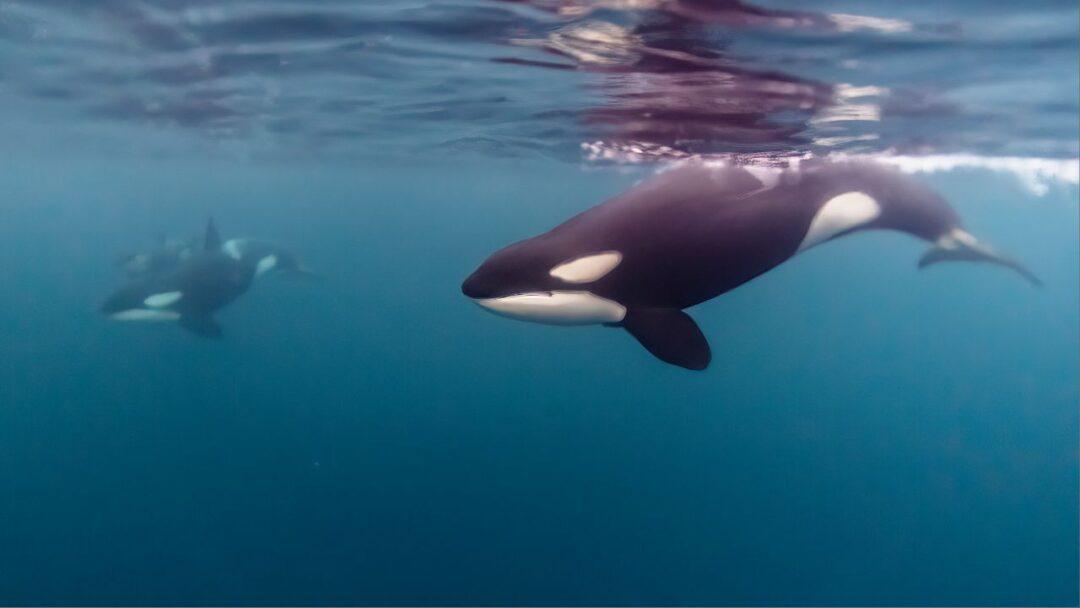
- Apex Predators: Killer whales are apex predators, meaning they sit at the top of the food chain in the marine ecosystem. They have no natural predators and are known for their intelligence and hunting skills.
- Social Structure: Killer whales live in highly organized social groups called pods. These pods can consist of up to 40 individuals, with strong bonds between members. The social structure within pods is complex, and they exhibit cooperative hunting and communication.
- Exceptional Communication: Killer whales have a diverse range of vocalizations, including clicks, whistles, and songs. They use echolocation to navigate, communicate, and locate prey in their marine environment.
- Varied Diet: Killer whales have a diverse diet that includes fish, squid, seals, sea lions, dolphins, and even other whales. Some populations specialize in specific types of prey, demonstrating cultural differences in hunting techniques.
- Intense Hunting Strategies: Killer whales employ various hunting strategies depending on their prey. They may use coordinated teamwork to create waves that wash seals off ice floes or swim in tight circles to create a vortex that brings fish closer together for easy capture.
- Longevity: Killer whales have one of the longest lifespans of any marine mammal, with individuals living for 50 to 80 years on average. Females tend to live longer than males, with some reaching over 90 years of age.
- Matrilineal Society: Killer whales have a matrilineal society, meaning the social structure is centered around the females. The eldest female, known as the matriarch, plays a crucial role in guiding and leading the pod.
- Cultural Behaviors: Different killer whale populations exhibit distinct cultural behaviors, such as unique vocalizations, hunting techniques, and feeding preferences. These behaviors are passed down through generations and contribute to the rich diversity of killer whale societies.
- Global Distribution: Killer whales can be found in oceans all around the world, from the Arctic to the Antarctic and tropical waters. Different populations have adapted to specific environments and have distinctive physical characteristics.
- Conservation Concerns: Despite their widespread distribution, killer whales face various conservation challenges. These include habitat degradation, pollution, depletion of prey species, and the impact of captivity. Conservation efforts aim to protect these magnificent creatures and their critical role in marine ecosystems.
Lords of the Frozen World: Polar Bears and Brown Bears
A. Polar Bears: Surviving in a Changing Arctic
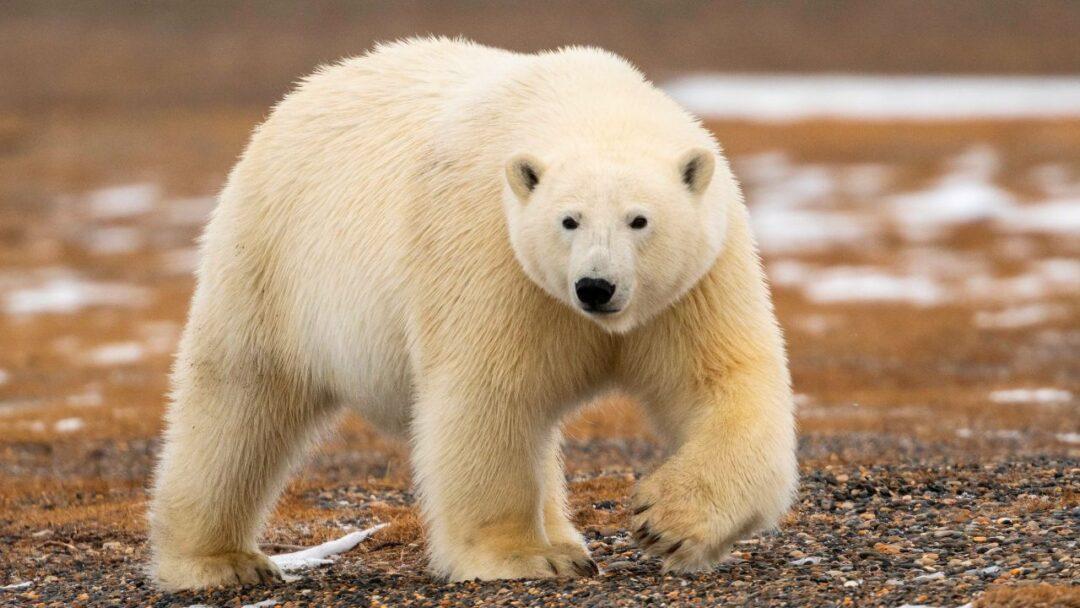
- Arctic Giants: Polar bears (Ursus maritimus) are the largest species of bears in the world. Adult males can weigh up to 1,500 pounds (680 kilograms) and measure about 8 to 10 feet (2.4 to 3 meters) in length.
- Cold-Weather Specialists: These magnificent predators are uniquely adapted to survive in the harsh Arctic environment. They have a thick layer of blubber and a dense double-layered fur coat that helps them stay warm in freezing temperatures.
- Powerful Swimmers: Polar bears are excellent swimmers and can cover long distances in water. They use their large, webbed front paws to paddle through the icy waters, and their streamlined bodies allow them to move swiftly.
- Sea Ice Dependence: Polar bears rely on sea ice as their primary habitat for hunting seals, their main food source. They use the ice as a platform to stalk and capture their prey, making them highly dependent on the health of the Arctic sea ice ecosystem.
- Apex Predators: As apex predators, polar bears sit at the top of the Arctic food chain. They are skilled hunters and can patiently wait for hours near breathing holes or seal dens, using their sense of smell to detect seals’ presence.
- Superb Sense of Smell: Polar bears have an incredible sense of smell, which is crucial for their survival. They can detect seals and other prey from miles away, even under layers of ice and snow.
- Birth and Maternal Care: Female polar bears give birth to their cubs in snow dens, usually during the winter months. The mother polar bear provides intense maternal care, nursing and raising her cubs for about two to three years, teaching them vital hunting and survival skills.
- Adaptations for Arctic Life: Polar bears have several physical adaptations that help them thrive in their icy habitat. Their fur appears white but is actually transparent, reflecting light and camouflaging them in the snow. They also have black skin, which helps them absorb and retain heat from the sun.
- Threatened Species: Polar bears face significant challenges due to climate change and the loss of sea ice. The reduction in their natural habitat, along with other factors such as pollution and human interactions, has led to their classification as a vulnerable species by the International Union for Conservation of Nature (IUCN).
- Conservation Efforts: Various conservation organizations and governments are working to protect polar bears and their habitats. Efforts include promoting sustainable practices, reducing greenhouse gas emissions, and implementing measures to reduce conflicts between polar bears and humans.
B. Brown Bears: The Mighty Omnivores
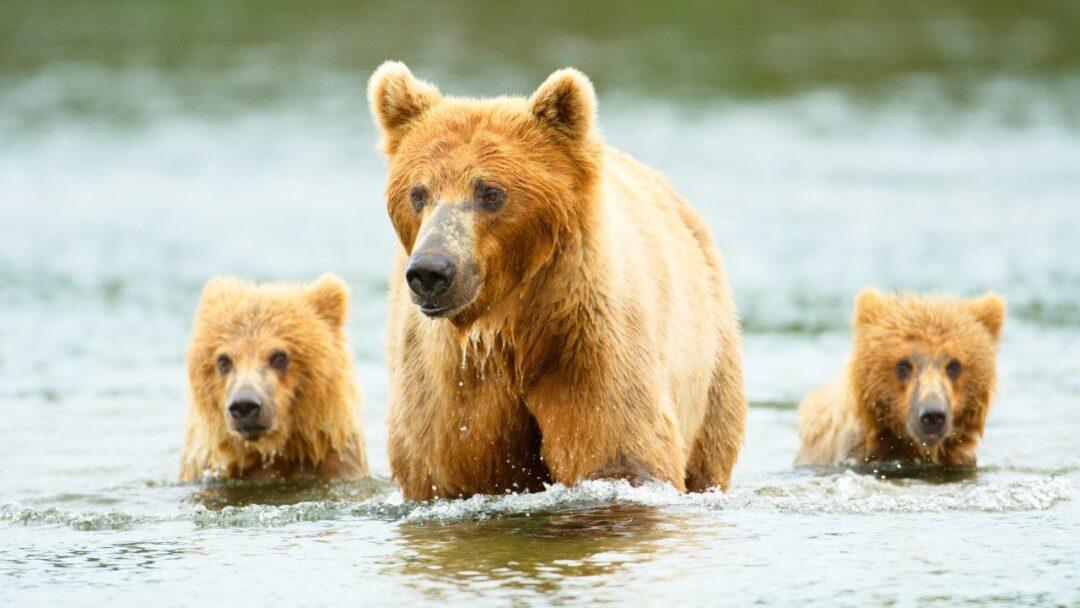
- Size and Strength: Brown bears are one of the largest terrestrial predators in the world. Adult males can reach weights of up to 1,400 pounds (635 kilograms) and stand up to 10 feet (3 meters) tall when on their hind legs.
- Omnivorous Diet: Brown bears are highly adaptable and have an omnivorous diet. While they are opportunistic predators and can hunt large mammals such as moose and elk, they also consume a variety of plant matter, including berries, nuts, grasses, and roots.
- Fishing Expertise: Brown bears are skilled fishermen. During the salmon spawning season, they gather at rivers and streams, using their powerful jaws and claws to catch fish as they swim upstream. This rich food source allows them to accumulate fat reserves for the winter months.
- Hibernation: Brown bears undergo a period of hibernation during the winter. They retreat to dens, which can be natural caves, hollow trees, or excavated burrows. During this time, their metabolic rate decreases, and they survive on the fat reserves they built up during the summer and fall.
- Remarkable Senses: Brown bears have an excellent sense of smell, which they use to locate food sources and detect potential threats. Their sense of smell is estimated to be seven times better than that of a bloodhound. They also have good hearing and eyesight.
- Maternal Care: Female brown bears exhibit strong maternal instincts. They give birth to usually one to four cubs in winter dens and remain with their young for up to two and a half years, teaching them essential survival skills such as hunting and foraging.
- Wide Geographic Range: Brown bears have a broad geographic distribution, inhabiting various ecosystems across North America, Europe, and Asia. Different subspecies, such as the Kodiak bear and the grizzly bear, can be found in specific regions.
- Important Ecosystem Engineers: Brown bears play a vital role in shaping ecosystems. Through their foraging and hunting activities, they contribute to seed dispersal, nutrient cycling, and controlling prey populations. Their feeding behaviors also create habitats for other species, such as scavengers and insects.
- Threats and Conservation Status: Brown bears face numerous threats, including habitat loss, poaching, and conflicts with humans. Several subspecies are classified as threatened or endangered, highlighting the need for conservation efforts to protect their populations and habitats.
- Symbolic and Cultural Significance: Brown bears hold cultural and symbolic significance in many societies. They are often revered as powerful and spiritual creatures, appearing in myths, legends, and artwork throughout history. In some regions, they are considered national or state symbols, representing strength and wilderness.
Guardians of the Depths: Great White Sharks and Killer Whales
A. Great White Sharks: Silent Hunters of the Sea

- Great white sharks (Carcharodon carcharias) are one of the largest predatory fish species, with adults reaching an average length of 15 to 20 feet (4.6 to 6 meters) and weighing up to 5,000 pounds (2,268 kilograms).
- Despite their intimidating reputation, great white sharks have a low incident rate of unprovoked attacks on humans. They are often curious and investigative but rarely target humans as prey, preferring marine mammals and fish.
- Great white sharks possess a unique set of adaptations that make them efficient predators. Their streamlined bodies, powerful tails, and rows of serrated teeth enable them to reach incredible speeds, breach out of the water, and deliver devastating bites to their prey.
- These sharks have highly developed senses, including excellent vision, acute hearing, and an impressive sense of smell. They can detect a single drop of blood in 25 gallons (100 liters) of water and sense electromagnetic fields produced by the movements of living organisms.
- Great white sharks are known for their remarkable leaping ability, often breaching the water’s surface while hunting or during territorial displays. This behavior allows them to surprise their prey from below and generate more force for capturing it.
- Contrary to popular belief, great white sharks do not have a constant need to swim to breathe. They possess a specialized system called buccal pumping that allows them to force oxygen-rich water over their gills even when stationary.
- These sharks are highly migratory and have been recorded traveling vast distances across ocean basins. They are known to make transoceanic journeys, and individual sharks have been tracked swimming thousands of miles.
- Great white sharks have a lifespan of around 30 to 40 years. However, their slow growth rate and late maturation make them vulnerable to population declines, as it takes several years for individuals to reach reproductive age.
- Great white sharks are considered apex predators, meaning they have no natural predators in the marine ecosystem. However, orcas (killer whales) have been observed preying on great whites in some instances, demonstrating their ability to overcome these formidable predators.
- Conservation efforts are crucial for the long-term survival of great white sharks. They face numerous threats, including overfishing, habitat degradation, and accidental capture in fishing gear. Many countries have implemented protections and regulations to safeguard these iconic creatures and their habitats.
B. Killer Whales: Masters of the Marine Ecosystems
- Preying on marine mammals and other apex predators: Examine the hunting strategies of killer whales as they target marine mammals, including their use of cooperative hunting techniques and their interactions with other apex predators. And Killer whales hunt Great White Sharks also.
- Complex social structure and cultural behavior: Explore the intricate social structure of killer whales, their distinct vocalizations, and the transmission of cultural behaviors within different killer whale populations.
- Conservation concerns and the importance of protecting killer whale populations: Discuss the conservation challenges faced by killer whales, such as pollution and depletion of prey species, and emphasize the importance of protecting these magnificent creatures and preserving their vital role in marine ecosystems.
Elusive Giants: Snow Leopards and Komodo Dragons
A. Snow Leopards: Ghosts of the Mountain Peaks
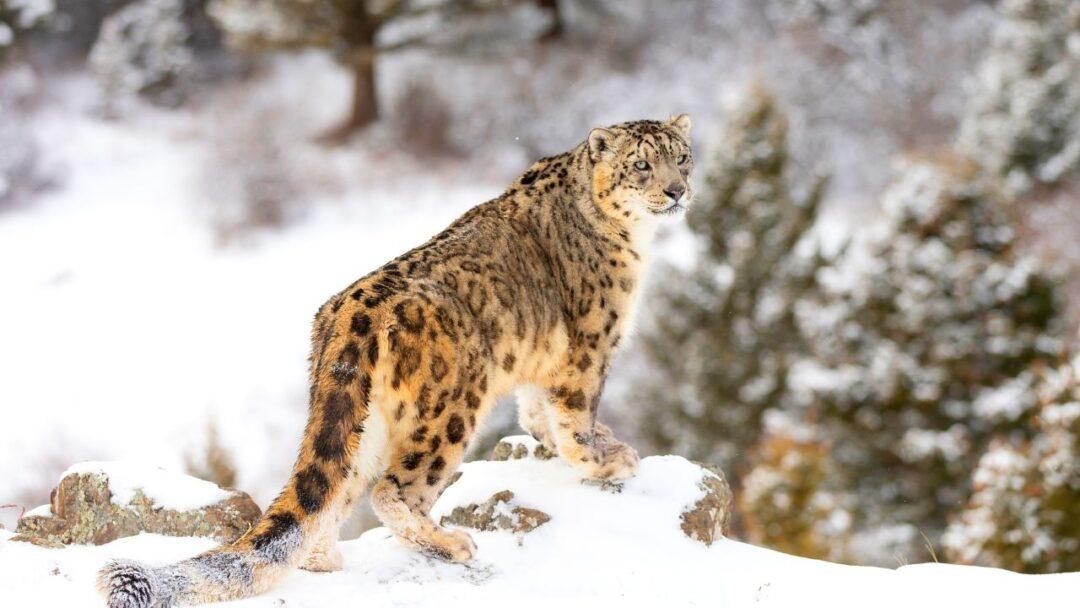
- Elusive Ghosts of the Mountains: Snow leopards (Panthera uncia) inhabit the high mountain ranges of Central Asia, including the Himalayas. They are elusive and stealthy, making them notoriously difficult to spot in the wild.
- Perfectly Adapted for Cold Environments: Snow leopards have several physical adaptations that enable them to survive in their harsh mountainous habitats. Their thick fur coat, including a long tail that acts as a scarf for added warmth, helps them withstand freezing temperatures.
- Masters of Stealth: Snow leopards are incredible stalkers and are capable of silently approaching their prey. Their fur, which provides excellent camouflage against rocky terrain, aids in their stealthy hunting approach.
- Nimble Climbers: Snow leopards are highly agile and can traverse rugged and steep mountain slopes with ease. They are skilled climbers, able to negotiate cliffs and rocky surfaces effortlessly.
- Specialized Prey: Snow leopards primarily prey on blue sheep (bharal), ibex, and other mountain ungulates. Their powerful hind limbs allow them to leap and pounce on their unsuspecting prey.
- Solitary Lifestyle: Snow leopards are typically solitary animals, with individuals maintaining large home ranges that can span dozens of square kilometers. This solitary behavior helps reduce competition for resources in their rugged environment.
- Endangered Species: Snow leopards are classified as an endangered species. Their population is estimated to be between 4,000 to 7,000 individuals, with habitat loss, poaching, and retaliatory killings posing significant threats to their survival.
- Exceptional Jumpers: Snow leopards are known for their remarkable jumping abilities. They can leap up to 9 meters horizontally and 6 meters vertically, allowing them to ambush prey from above or navigate across treacherous terrain.
- Silent Communicators: Snow leopards use a variety of vocalizations to communicate with each other, including chuffing, hissing, growling, and moaning. They also employ scent marking through urine spraying to demarcate their territories.
- Conservation Efforts: Numerous conservation organizations and local communities are actively working to protect snow leopards and their habitats. Initiatives include establishing protected areas, implementing anti-poaching measures, and promoting community-based conservation programs.
B. Komodo Dragons: Ancient Predators of Indonesia

- Largest Lizard Species: Komodo dragons (Varanus komodoensis) are the largest living lizard species on Earth. They can grow up to 10 feet (3 meters) in length and weigh around 150 pounds (70 kilograms).
- Native to Indonesia: Komodo dragons are found exclusively in the wild on a few Indonesian islands, including Komodo, Rinca, Flores, Gili Motang, and Padar. These islands are part of the Komodo National Park, a UNESCO World Heritage Site.
- Deadly Venom: Unlike other large predators, Komodo dragons don’t rely solely on their size and strength to bring down prey. They have venomous glands in their lower jaws that contain toxins, which can cause severe bleeding and inhibit blood clotting in their prey.
- Stealthy Hunters: Komodo dragons are skilled hunters and primarily ambush their prey. They patiently wait in the vegetation or near water sources, striking with a burst of speed to catch their unsuspecting prey, which includes deer, pigs, water buffalo, and smaller reptiles.
- Strong Sense of Smell: These reptiles possess an incredible sense of smell, capable of detecting carrion from several miles away. They can also locate live prey using their keen sense of smell.
- Cannibalistic Behavior: Adult Komodo dragons have been known to exhibit cannibalistic behavior, especially towards younger or injured dragons. They have sharp, serrated teeth that aid in tearing flesh, and their powerful jaws allow them to consume large chunks of meat.
- Unique Reproductive Strategy: Female Komodo dragons reproduce through a process called parthenogenesis, where they can produce offspring without the need for male fertilization. This phenomenon is known as facultative parthenogenesis and allows females to populate areas where males are scarce.
- Slow Metabolism: Komodo dragons have a slow metabolic rate, which allows them to survive on as little as 12 meals per year. After consuming a large meal, they can go for weeks or even months without eating again.
- Climbing Ability: Despite their large size, Komodo dragons are surprisingly good climbers. They are capable of climbing trees to access food sources, evade predators, or bask in the sun.
- Conservation Status: Komodo dragons are classified as vulnerable by the International Union for Conservation of Nature (IUCN) Red List. Their populations are threatened by habitat loss, poaching, and human-wildlife conflict. Conservation efforts, including protected areas and captive breeding programs, aim to ensure their long-term survival.
Frequently Asked Questions (FAQ)
What are apex predators?
The top predators in each ecosystem are called apex predators. They are at the top of the food chain and are not naturally preyed upon.
Which animals are considered apex predators?
Different habitats have different apex predators. Lions, tigers, great white sharks, crocodiles, grizzly bears, polar bears, wolves, killer whales, jaguars, komodo dragon, nile crocodile and Saltwater crocodiles are a few of the most famous.
What factors determine the dangerousness of an apex predator?
An apex predator’s potential threat to people or other animals in its environment, as well as its size, strength, and speed, can all be used to gauge how dangerous it is.
How do apex predators maintain their populations in the wild?
Apex predators help maintain the balance of ecosystems by regulating the populations of their prey. Their presence ensures that certain species do not become overpopulated, which can have detrimental effects on the overall ecosystem.
Are apex predators a threat to humans?
While apex predators have the capability to pose a threat to humans, most avoid interactions and conflicts. However, caution should be exercised when encountering them in the wild to ensure both human and animal safety.
What is the most dangerous apex predator?
Determining the most dangerous apex predator is subjective and can vary depending on factors such as the environment, prey availability, and specific circumstances. However, some commonly regarded dangerous apex predators include the saltwater crocodile, Tigers, African lion, and great white shark.
Can apex predators be found in different habitats?
Yes, apex predators can be found in various habitats around the world. They can inhabit terrestrial environments like forests and savannas, as well as aquatic ecosystems such as oceans, rivers, and lakes.
Are apex predators crucial for ecosystem balance?
Yes, apex predators are essential to keeping the ecosystem in balance. They aid in regulating the food chain and avoiding ecological imbalances by regulating the populations of herbivores and smaller predators.
How can we coexist with apex predators?
Understanding apex predator behavior, protecting their habitats, and taking the necessary safety measures when coming into contact with them are all necessary for coexistence. To achieve successful coexistence, conservation initiatives, education, and ethical wildlife management are also necessary.
Can apex predators be protected and conserved?
It is true that efforts are made to safeguard and conserve apex predators through initiatives like habitat preservation, anti-poaching campaigns, and fostering an understanding of their ecological significance. By taking these conservation measures, we hope to protect apex predators for future generations.
How do apex predators impact their ecosystems?
Apex predators play a crucial role in maintaining ecosystem health. Their presence helps regulate prey populations, prevents overgrazing, and promotes biodiversity by ensuring the survival of the fittest.
Are apex predators solitary or social animals?
It varies among species. Some apex predators, like lions and wolves, exhibit social behavior and live in groups, while others, such as crocodiles and sharks, are generally solitary creatures.
Are apex predators at risk of extinction?
Indeed, a number of apex predator species are in danger because of issues like habitat loss, unreported hunting, and conflicts between people and wildlife. To safeguard both these species and their habitats, conservation efforts are required.
Can apex predators adapt to changing environments?
Over time, apex predators have changed and become remarkably adaptable. Rapid environmental changes brought on by human activity, however, can make it difficult for them to survive and necessitate adaptable responses.
How fast can apex predators run or swim?
Among apex predators, speed varies. For instance, the great white shark can swim at about 25 miles per hour (40 kilometers per hour), while the lion can reach speeds of up to 50 miles per hour (80 kilometers per hour) on land.
Do apex predators have any natural predators?
As apex predators, they generally have no natural predators themselves. However, in rare instances, conflicts between apex predators may occur, leading to competition or territorial disputes.
What is the impact of apex predators on human communities?
Apex predators rarely come into contact with people, but this is not always the case. Reduce conflict and encourage coexistence by providing appropriate education, managing wildlife, and putting safety measures in place.
How do apex predators communicate with each other?
A variety of means, including vocalizations, body language, scent marking, and visual displays, are used by apex predators to communicate. These means of communication aid in the formation of territories, the attraction of mates, and the coordination of group hunting tactics.
Can apex predators change their hunting patterns?
Apex predators are remarkably adaptable in their hunting. On the basis of elements like prey availability, seasonality, and habitat conditions, they can alter their hunting techniques, strategies, and even the prey they choose to hunt.
Do apex predators have any known conservation success stories?
Yes, using apex predators has resulted in some notable conservation success stories. The return of populations of apex predators, such as the gray wolf, in some areas is evidence of the success of conservation efforts.
Conclusion
These apex predators’ lives shed light on the delicate balance that exists in the natural world. Their ecological functions, territorial conflicts, and hunting tactics influence the dynamics of their habitats. The importance of conservation efforts to protect these magnificent predators and the ecosystems they live in is highlighted by our increased appreciation of their magnificence as well as by our increased understanding of their special adaptations and survival techniques. We can work to protect these amazing animals and ensure their place in the wild for future generations through scientific research, community involvement, and international initiatives.
The Remarkable Adaptations of Arctic Animals: NEXT POST





Pingback: Animal War Rules | Animal TV Hindi